|
SEA
LITTER CRITTERS
ABOUT -
CIRCUMNAVIGATION
- CONTACTS - FOUNDATION -
HOME - A-Z INDEX
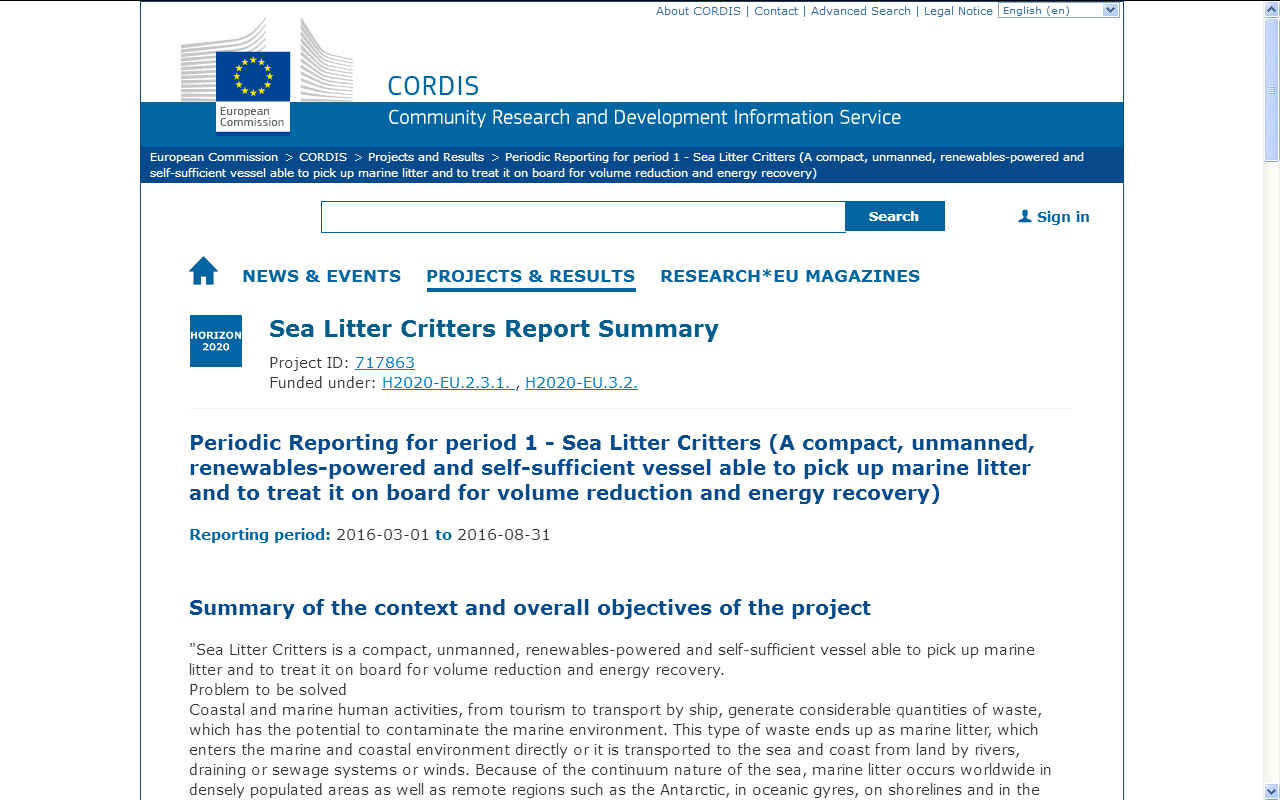
Sea Litter Critters — Result In Brief
Project ID: 717863
Funded under: H2020-EU.2.3.1.
H2020-EU.3.2.
Country: Italy
Domain: Aquatic resources
Cleaning up with the Sea Litter Critter.
Could an automated ‘critter’ eat up and process litter at sea using plasma technology? One EU-funded project set to work to find out.
More than 150 million tonnes of plastic have accumulated in the
world's
oceans, with over 4.5 million tonnes added each year. It becomes most problematic when its breaks up into tiny microparticles that are then ingested by sea creatures and so enter the food chain. A concept developed by the EU-funded SEA LITTER CRITTERS project could provide a solution to cleaning up this sea litter. Its feasibility study looked at the market appeal of a small automated waste collection vessel called the ‘Sea Litter Critter’, which not only picks up litter, but treats it on-board.
Project coordinator Ilaria Schiavi explains that the idea for the device came from observing a marine litter collection vessel operating at an Italian tourist resort: ‘It was paid for by a local tourist association concerned that dirty beaches would put off visitors, but the high costs meant the vessel could only be used when there were significant quantities of debris.’ This gave IRIS, a small start up based in Turin,
Italy, the idea to use their expertise in plasma technology to come up with an improved solution. Using plasma - a very high temperature, very energetic state of matter - solid waste can be completely broken down with no risk of dioxines and furans emissions, which can form in other combustion-based waste treatment methods.
At SEA LITTER CRITTERS’s core is IRIS’s small scale pyrolizer unit (patent pending), which treats thermally solid waste and transforms it into syngas, a mixture of
hydrogen, carbon monoxide, and methane and a residue which can be recycled as aggregate for road material or
concrete. The syngas could be exploited for producing
electricity or fuelling the vessel’s motor. Currently a fully unmanned, automated device is not possible due to regulatory and technology limitations but Schiavi says, ‘Ideally, once automated navigation is fully developed, this vessel could be left to hoover up marine litter day and night.’
In their feasibility study the team commissioned specific market research to ascertain if the device was attractive to coastal resorts, municipalities and
aquaculture enterprises. While the idea was found to be of interest to the market, the main challenge was found to be securing the necessary investment for such equipment.
Schiavi notes, ‘Currently, marine litter is everybody’s problem but nobody wants to pay for cleaning it up, and there are no regulations stipulating who should be dealing with it.’ Changes to the current regulatory climate, could kick-start a market for this device, as Schiavi explains. ‘The EU is very active on the subject as the problem is growing to a level likely to affect European industries such as
fishing. So we expect that the regulatory landscape will change, and there will be a requirement for local authorities to act.’
The project team is working towards developing a sea-ready vehicle to be tested within the next four years. It expects disposal of marine litter through thermal treatment will have a place in the future management framework for materials that cannot be recycled or for emergency situations such as spills and flooding events.
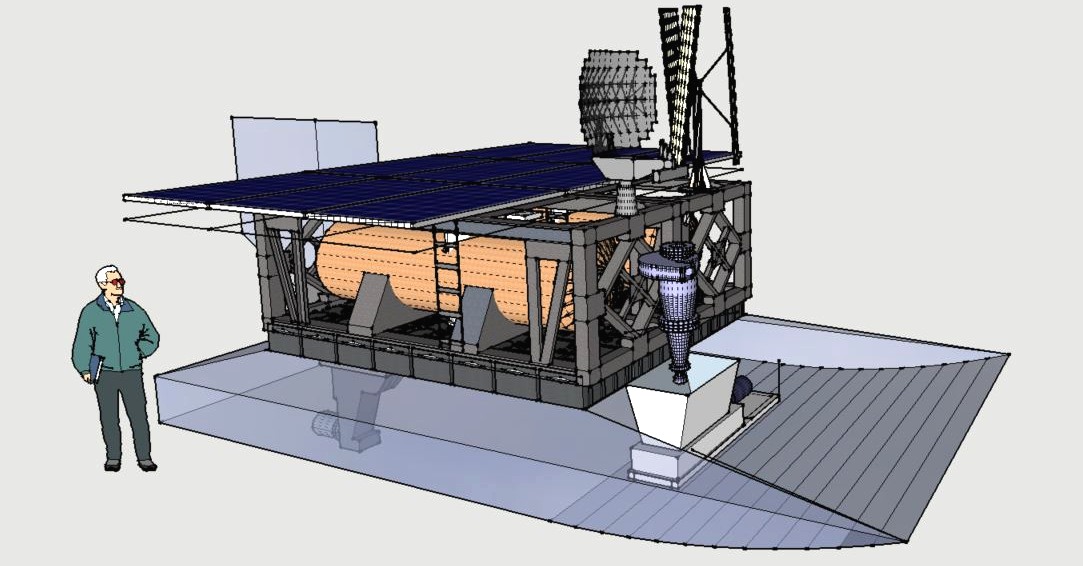
KEYWORDS
SEA LITTER CRITTERS, waste management, feasibility study, coastal management, marine litter, small scale plasma pyrolizer, thermal treatment, automated vessel, plastic pollution, microparticles
From a report updated on: 2017-10-18
Record Number: 203875
http://cordis.europa.eu/result/rcn/203875_en.html
NAVIGATING
EU MARITIME RESEARCH DEVELOPMENTS
This
Results Pack features 12 such innovative projects, such as the
SMS
and BRAAVOO
projects that both set out to tackle the challenge of
detecting traces from a range of marine pollutants, with
biosensor equipment which can transmit results in real-time,
supporting the decision making of the seafood industry and
environmental authorities. SEA-ON-A-CHIP
took a similar approach by developing an early warning system
for common contaminants affecting health and the environment. SEA
LITTER CRITTERS took a more ‘hands on’ approach to
combating pollution, with a device which literally captures
and processes litter at sea, using plasma technology.
Some projects have concentrated more on developing ways to
maximise the efficiency of current endeavours. For example, OCEANFISH
took advantage of ocean currents to enable fish farming
further out to sea. Whereas TARGETFISH
worked towards keeping the fish in these farms disease-free by
developing vaccines with an effective means of delivery. ARRAINA
explored plant based feed for farmed fish to reduce pressure
on marine resources, whereas IDREEM
sought to improve the integrated production of the European
aquaculture sector for reduced waste and increased
competitiveness.
Finally, two projects look to shape the future, but in very
different ways. PHARMASEA
delved the unexplored ocean depths and marine microbes in the
quest for new compounds which could offer the basis for new
medicines. Meanwhile, the SEACHANGE
project used outreach activities to promote knowledge about
the vital role that marine environments play in our daily
lives, targeting Europe’s urban communities.
SEA LITTER CRITTERS REPORT SUMMARY
Project ID: 717863
Funded under: H2020-EU.2.3.1. ,
H2020-EU.3.2.
Periodic Reporting for period 1 - Sea Litter Critters (A compact, unmanned, renewables-powered and self-sufficient vessel able to pick up marine litter and to treat it on board for volume reduction and energy recovery)
Reporting period: 2016-03-01 to 2016-08-31
Summary of the context and overall objectives of the project
"Sea Litter Critters is a compact, unmanned, renewables-powered and self-sufficient vessel able to pick up marine litter and to treat it on board for volume reduction and energy recovery.
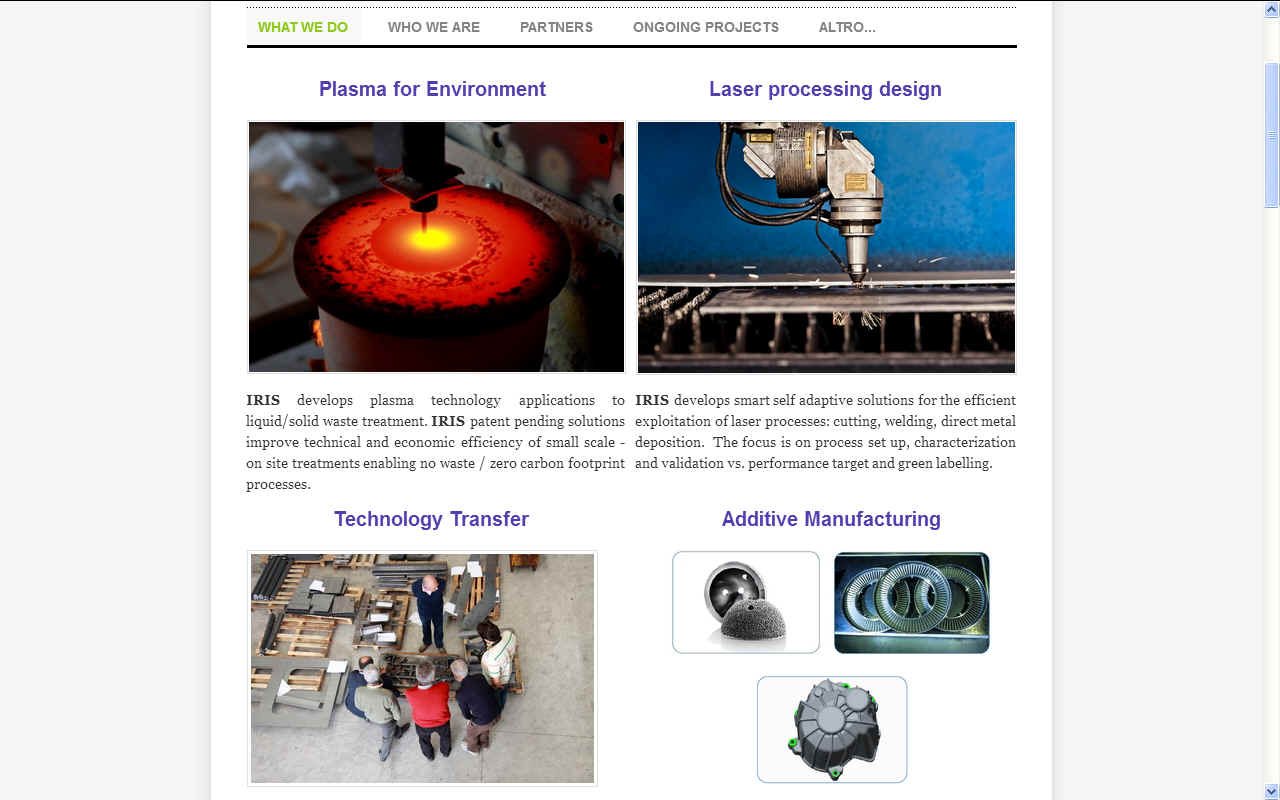
PROBLEM TO BE SOLVED
Coastal and marine human activities, from tourism to transport by ship, generate considerable quantities of waste, which has the potential to contaminate the marine environment. This type of waste ends up as marine litter, which enters the marine and coastal environment directly or it is transported to the sea and coast from land by rivers, draining or sewage systems or winds. Because of the continuum nature of the sea, marine litter occurs worldwide in densely populated areas as well as remote regions such as the Antarctic, in oceanic gyres, on shorelines and in the deep sea. It affects the whole water column from the surface to the seabed. It causes environmental problems (death of marine animals by entanglement and ingestion; smothering of marine vegetation and corals; contamination of sea environment by toxic components released through break up; transport of alien species etc.), economic problems (reducing the recreational value of water and coast therefore attractiveness for tourists, affecting fishing and fish farming, damaging boats) and social problems (pollutants and toxins entering the food chain through ingestion by sea creatures, from plankton to larger fish, with consequent effects on human health). Globally, it is not known with confidence how much litter is currently within the sea system nor how much is entering the sea annually, although a report published in January by the
Ellen MacArthur Foundation states that in a business-as-usual scenario, the ocean is expected to contain one tonne of plastic for every three tonnes of fish by 2025, and by 2050, more plastics than fish [by weight].
At European level, marine litter is considered one of the indicators of the Good Environmental Status of the seas (Descriptor 10 of the European Marine Strategy Framework Directive ) and a specific workgroup has been set up to define the monitoring protocols while Member States initiate actions on awareness raising and minimisation activities. Each Regional Sea sees local communities/NGOs organising initiatives on a voluntary basis, like clean up days or litter fishing. From those, different types of litter are found, depending for example on the use of the sea and the morphology of the basin: the Mediterranean sea, highly trafficked by cruises/ferries and with popular beaches has on average mostly litter derived from tourist activities and up to 80% of the litter originates mostly from land, while the North Atlantic, highly trafficked with commercial boats, has mostly litter deriving from either fishing activities or loss of cargo. All studies highlight that plastic is the most common type of material found amongst the litter items, be it household items to fishing gear lost at sea. This poses a major problem as plastic is a persistent and pervasive pollutant: in such a harsh environment, plastic items become brittle and break down into small particles, but basically never dissolve. The particles can be eaten by zooplankton thus bringing toxins into the foodchain. Therefore, actions to prevent plastic entering the sea (minimisation of waste, use of biodegradable plastic, awareness raising) as well as actions to minimise the effects it has on the environment are required.
Picking up litter while it is still intact, like through beach clean up days or the KIMO’s Fishing for Litter initiatives, helps in reducing the risk of plastic breaking down into finely dispersed particles, as well as mitigating the effects, e.g. on the recreational value of the coast, and raising awareness. Alongside these high profile environmental initiatives, there is evidence of stakeholders, particularly from the tourist sector, taking matters on their hand: Local Authorities organise themselves, often in cooperation with local retailers, hotel owners, beach facilities managers etc. and organise services to collect beached or floating litter within a few meters from the beaches. For example, the Municipality of Celle Ligure, on the Ligurian sea, whose beaches have been awarded Blue Flag status every year since 1996 and that has in place an Environmental Management System certified under ISO 14001, has organised a sea sweeper service, i.e. a small motorboat equipped with a net for collecting floating debris in the sea a few meters from the beaches. This vessel is deployed three times a day on the nearly 2km-long coast pertaining to the municipality. This service collected 3,650kg of litter in 2014, up nearly 50% from 2013 (2450kg) and cost to the consortium set up to promote tourism in Celle nearly 10,000EUR per year.
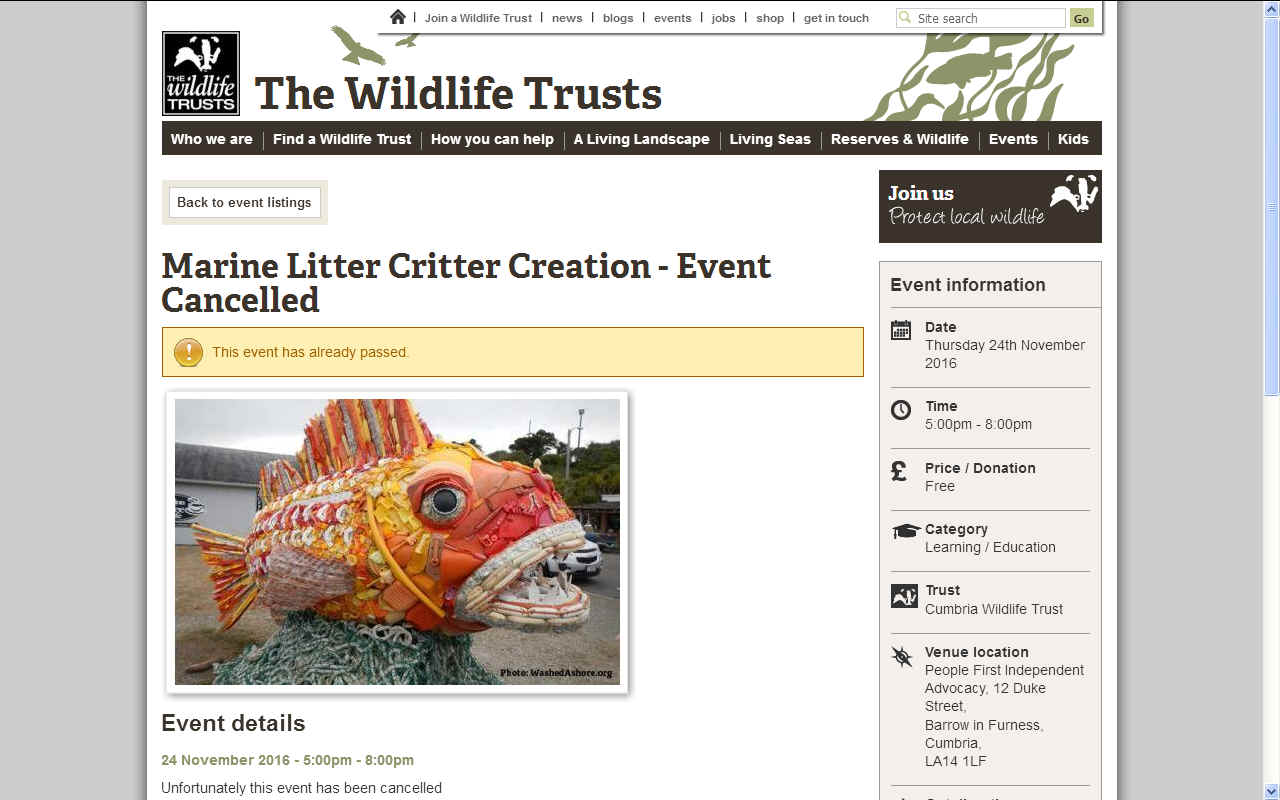
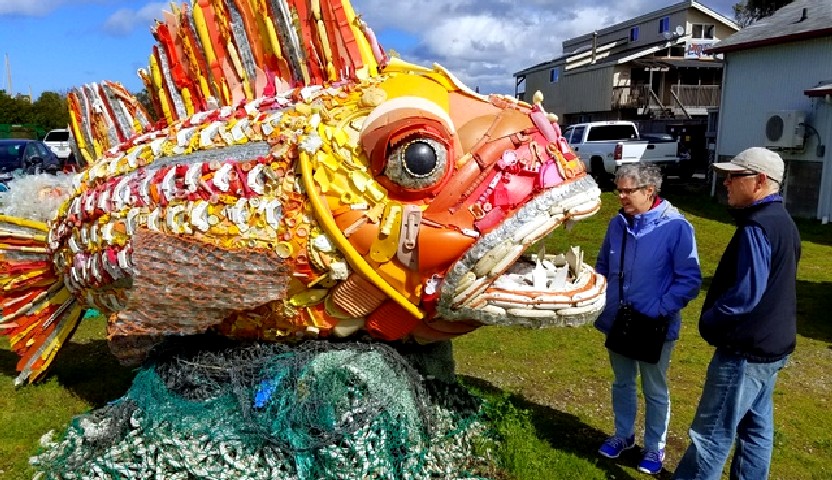
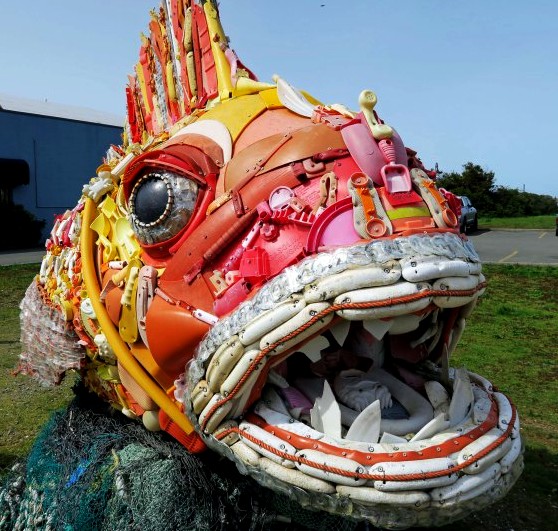
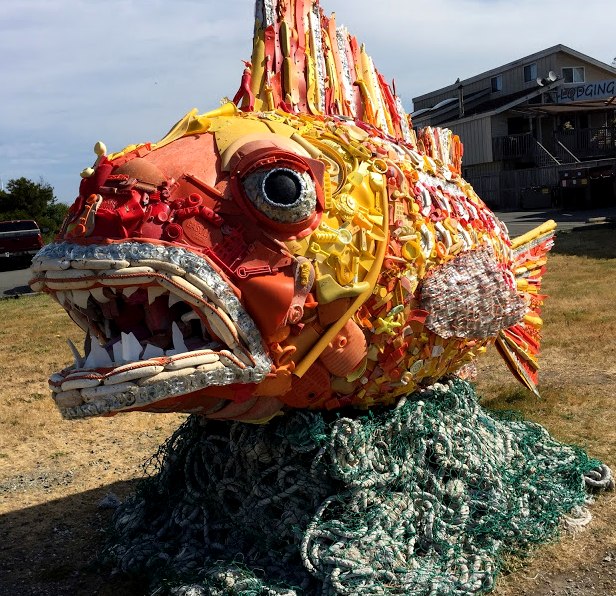
MARINE
LITTER CRITTER - The
Wildlife Trust proposed an event
to create a litter critter in November 2016 based on this
plastic waste art from Oregon, USA (we think). We know from
our own efforts that it is difficult to get people interested
enough in cleaning up our oceans to actually take the time out
to make it happen. Unfortunately, this event was cancelled
though we don't know the reasons. The venue location was to
have been: People First Independent Advocacy, 12 Duke Street,
Barrow in Furness, Cumbria, LA14 1LF. Don't give up people!
OBJECTIVES OF THE FEASIBILITY STUDY
The project intends to explore the feasibility of introducing to the market a compact, autonomous and self sufficient litter collection and treatment vessel based on a patent pending device treating waste with plasma technology and no harmful emissions. This device is designed to operate near the shores especially nearer tourist facilities (beaches, marinas etc) substituting the mechanical collection of litter currently adopted or for clean-up operations after atmospheric events bringing unwanted solid material into the sea, offering also the opportunity for litter and other environmental data monitoring activities. With a litter pick up system able to collect floating litter of every dimension and an on-board shredder, it would be suitable to treat most sizes of waste collected from the top water column. It will have specialist combination of "vision" technologies to scan the sea surface and provide information for defining the navigation path for most efficient litter pick up. Sea Litter Critters will utilise an electric motor, suitable for a cruise speed of a few knots, powered by a battery pack recharged through solar panels, windpower and a generator utilising the syngas produced by the thermal treatment.
This vessel will be first of all developed for working near the coast in normal sea conditions or in rivers (including estuarine areas) and lakes, therefore it will have a suitable flat shape for shallow waters. It will be deployed for daily pick up service of the debris coming into the sea/waterway from everyday land activities or for extended/extra clean up operations after medium/small storms affecting the coast or for cleaning-cum-monitoring missions. As a further development, the hull shape could be further studied, alongside an overall reinforcement and suitable protection of the equipment on board, to make the vessel able to withstand the much harsher conditions of the high seas, for deployment in missions nibbling away at the waste patches within the oceanic gyres. Further developments will also concentrate on the collection system to adapt it to pick up sank waste near the coast, microparticles and liquid waste (oil spills), all the while taking into account minimisation measures to avoid bycatch and damage to the sea environment."
Work performed from the beginning of the project to the end of the period covered by the report and main results achieved so far.
During the feasibility study IRIS undertook the following activities:
- Market analysis: mainly commissioned out to a specialist analyst;
- Stakeholders involvement: mainly through participation to the EMD and other contacts;
- Technology analysis: to understand which components are currently commercially available;
- Business development plan refining: to better define the business idea on the basis of the findings.
IRIS commissioned a full market research to Transparent Research, who analysed the automated marine debris collection equipment market for the Mediterranean and attempted a forecast for the period 2018–2024. The brief given to the analysts was to gather all the prevalent trends across all the Mediterranean countries anticipated to play a major role in the increasing adoption level of the market over the forecast period. It also required a study of key drivers, restraints, and opportunities expected to influence the market growth during the said period. Finally, it was requested to provide industry development and product concept testing analysis of the automated marine debris collection equipment market based on automation level and provision for waste treatment. IRIS also interviewed representatives of the committee Consorzio Promotour, grouping retailers, hoteliers and beach management companies in the Blue Flag municipality of Celle Ligure, on the Italian Riviera. The Consorzio manages a service for the cleaning of the sea in front of the beaches, undertaken by a small boat that travels along the coast using a net to trap floating debris. Other stakeholders contacted directly included NGOs working on marine environment protection and Authorities/business representatives of coastal areas, as well as Universities/research centres and innovative SMEs with interesting technologies. IRIS also took part to the European Maritime Day in Turku, Finland, learning about the sector, meeting potential suppliers/industrial partners and attending workshops on marine litter.
As IRIS specialises in small sale solid waste thermal treatment, it has been looking for potential partners to supply/develop the components of the SLC vessel: from renewable sources-powered unmanned vessels able to navigate autonomously, to vision and navigation systems. A number of potential partners supply have been found and contacted. The regulatory issues linked with fully autonomous navigation of unmanned vessels can be overcome with the adoption of remote controlled systems for the near-coast navigation, although transmission of data for formulating the best navigation needs to be looked at.
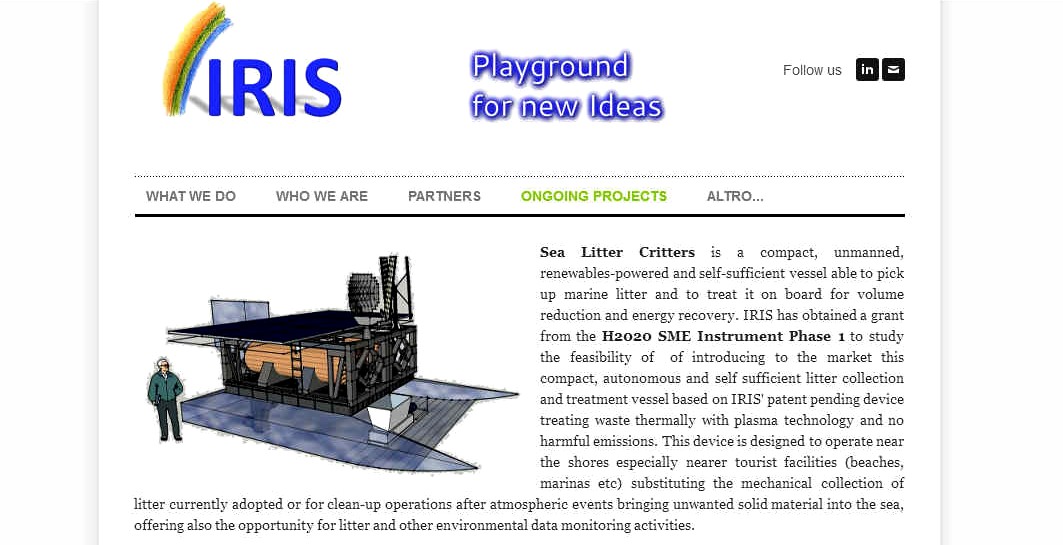
ABOUT
IRIS - Sea Litter Critters is a compact, unmanned, renewables-powered and self-sufficient vessel able to pick up marine litter and to treat it on board for volume reduction and energy recovery. IRIS has obtained a grant from the H2020 SME Instrument Phase 1 to study the feasibility of of introducing to the market this compact, autonomous and self sufficient litter collection and treatment vessel based on IRIS' patent pending device treating waste thermally with plasma technology and no harmful emissions. This device is designed to operate near the shores especially nearer tourist facilities (beaches, marinas etc) substituting the mechanical collection of litter currently adopted or for clean-up operations after atmospheric events bringing unwanted solid material into the sea, offering also the opportunity for litter and other environmental data monitoring activities.
IRIS develops plasma technology applications to liquid/solid waste treatment. IRIS patent pending solutions improve technical and economic efficiency of small scale - on site treatments enabling no waste / zero carbon footprint processes.
IRIS was founded in 2012 in the industrial area of TORINO. They have five employees supported by external collaborations with a background in industrial laser and plasma technology applications.
They are partnered with a group of local manufacturing SMEs specialising in laser and plasma cutting, CNC machining, bending and welding technologies, with the capability to build prototypes (e.g. novel equipment components, technological demonstrators) and to test new processes/equipments in industrial environment. They have a small laboratory dedicated to process testing and validation, shared with a network of partner companies. These include the laboratories of Turin's Politecnico
(DISAT, DET) and University (NIS, Chimica, Agraria), some Italian National Research Council Institutes
(CNR: ISTEC, IMAMOTER, IEIIT) and the National Metrology Institute
(INRIM).
They are members of MESAP - the Regional Innovation Pole on Mechatronics and Advanced Production Systems.
IRIS - Torino office
Corso Unione Sovietica 612/21
10134 TORINO - ITALIA
Email: info@irissrl.org
Phone: +39 011 347 3069
IRIS used the information collected for refining its business plan, also with the assistance of the SME Instrument Business Coach, who also supported IRIS in a review of its strategy.
Progress beyond the state of the art and expected potential impact (including the socio-economic impact and the wider societal implications of the project so far).
Through the Phase1 Feasibility study IRIS was able to understand better the market thanks to a specialist market analysis, complemented by direct contacts with stakeholders, from tourist resorts already collecting litter with skimmer-boats to NGOs and
fishermen involved in clean-up initiatives and/or projects. This allowed to make an estimate of a first section of the market and identify potential other customers and related business model. With respect to the start of Phase 1, IRIS has therefore been able to verify the profitability of its business idea with more market information.
From a technological point of view, IRIS has understood that there are regulatory barriers to the ideal
navigation system for Sea Litter Critters but that the sector is exploring the technology of fully autonomous unmanned vessels of all sizes, including large cargo ships, hence the normative will be soon reviewed to accommodate for these advances. By finding developers of unmanned - fully autonomous to remote-controlled - vessels already exploiting sun and wind energy for their electric motors, IRIS has identified suitable platforms for the Sea Litter Critter vessel as well as potential partners and suppliers with interesting technologies.
IRIS has been able to contact different stakeholders through Phase 1 gathering interest in its solution and ascertaining the impact that its implementation might have. Although marine litter prevention is the common political objective and recycling of collected debris is considered the preferred management solution, there are practical barriers (fouling and degradation of plastics in the sea, too much variety of materials, limited storage space at ports) and market conditions (lack of processors) that currently limit the uptake of this practice. An environmental balance study will be undertaken in preparation for a Phase 2 application to demonstrate how the Sea Litter Critters solution stands against collection, download at port and then best (= recycling) and current (disposing of marine litter in energy from waste plants or landfills) practices for marine litter management. It is recognised that Sea Litter Critters is not the solution to marine litter but it provides a practical choice for clean ups and upkeeping of cleaner shores in the short-medium term, and a quick, viable solution for emergency situations.
Finally, from a business perspective, IRIS sees Sea Litter Critters as the ideal application for its own patent pending waste treatment technology and a good business opportunity able to provide work to up to 17 new employees.
IRIS has concluded Phase 1 with an elaborated business plan that will be used as a basis for a Phase 2 application to be submitted 2017. Work on the development of the technology is continuing through self funding and local initiatives involving also local Universities.
IRIS'S TIMELINE
2017- 06: IRIS is at Clean Energy Ministerial 8 (CEM8) in Beijing promoting Symbionica Project
2017- 04: IRIS wins a grant under the H2020 SME Innovation Associate and it is now RECRUITING! Check the job offer!
2017- 03: IRIS opens officially its new operational site in Orbassano, near Turin
2017- 03: IRIS hosts BOREALIS' 24-month General Assembly and Exploitation Strategy seminar at its new premises.
2016 -05: IRIS participates to the European Maritime Day in Turku, Finland to gather contacts for its Sea Litter Critters project.
2016-05 IRIS attends SYMBIONICA's 6M meeting at Sheffield University campus, UK after the WP2 meeting at Ottobock's premises in Duderstadt, Germany (April).
2016-03 IRIS joins its project partners at SUPSI's in Lugano, Switzerland, for BOREALIS' 12-month meeting and WHITE'R 30-month meeting. During the latter, the working prototype of the robot and welding system was shown in operation to the whole project team and to the Project Officer.
2016-02 Seal of Excellence certificate obtained for our proposal for a feasibility study on our patent pending waste plasma treatment device.
2016-01 IRIS wins a H2020 SME Instrument - Phase1 grant for its project Sea Litter Critters.
2015-11 IRIS joins the FP7 APPOLO project as partner within the NEW-DELI project with the role of end-user.
2015-11 IRIS attends SYMBIONICA kick-off meeting in Bruxelles.
2015 - 10 WHITE'R reaches its 24th month of work. IRIS attends the General Assembly at FRAMOS' facilities in Munich.
2015-07 IRIS is pleased to announce that it will be supporting LaserLam srl in EMilk, an H2020 SME Instrument - Phase 1 project just awarded. More information to follow.
2015-07 IRIS attends BOREALIS 6th month meeting in Eindhoven, NL.
2015-06 IRIS presents Greenplasma Water technology to EXPO2015
2015-05 IRIS again on TV , Made in Italy, SKY#825. Watch it on youtube here!
2015-04 IRIS takes part to Affidabilità e Tecnologie
2015-02 IRIS attends BOREALIS kick off meeting in Turin
2015-01 IRIS and GREENPLASMA WATER on RAI TV, here (21m 20s) and here (15m 05s).
2014-12 IRIS and GREENPLASMA SOLID WASTE "on air" at the RAI TV morning news (start at 21m 10s), replied here (9m and 26s).
2014-10 During GREENPLASMA final meeting IRIS presented 2 fully functional prototypes, covered by 2 new patent applications, for plasma based waste treatment.
2014-07 IRIS endorses "Torino e le Alpi" programme to exploit plasma environment technologies in small mountain isolated villages
2014-06 New office opened in Torino!
2014-04 IRIS is attending International Laser Technology congress AKL2014
2013-12 IRIS is attending Horizon 2020 Information Day on Research PPPs' in Brussels
2013-11 IRIS is attending, as a visitor, ECOMONDO 2013 in Rimini
2013-10 ECOWELD project kickoff. Ecoweld is a MESAP project to develop a self programming automated laser welding system. IRIS is involved in the project by main contractor SL to support Project Management, Planning and Execution.
2013-10 WHITE'R project kickoff. White'R is a 3 year EU 7FP project developing a self-contained clean room consisting in a multi-robotic island that can be easily integrated in existing production shop-floors. It empowers the handling, assembly and disassembly of high value added optoelectronic products. The island’s devices - robots, operation units, transport, handling and tooling systems - are conceived as “Plug&Produce”
mechatronic modules properly configured coherently with the production requirements. IRIS is partner and responsible for dissemination and exploitation of project results
2013-09 GREENPLASMA midterm meeting. A proof of concept prototype of the small scale system to treat solid wastes has been successfully developed giving the OK to start the design and the construction of the
fully functional project demonstrator
2013-05 IRIS is attending, as a visitor, Munich - LASER World of PHOTONICS 2013
2012-11 IRIS joins MESAP, the Innovation Cluster for MEchatronics and Systems for Advanced Production of Piemonte Region
2012-09 GREENPLASMA project kick-off. Greenplasma is a 24 months MESAP project aiming at developing two devices, based on plasma technology, the first to treat industrial solid waste with thermal plasma, the second to treat industrial waste water with non thermal plasma coupled to photocatalysys. IRIS is involved in the project by main contractor Laserlam to support Project Management, Planning and Execution.
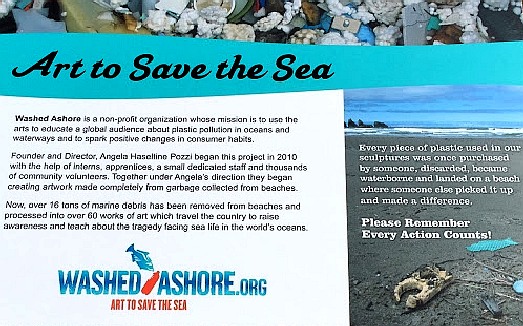
LINKS
& REFERENCE
https://ec.europa.eu/research/participants/portal/desktop/en/opportunities/h2020/calls/h2020-bg-2018-2020.html
http://seachangeproject.eu/
http://www.irissrl.org/ongoing-projects.html
http://www.seabinproject.com/
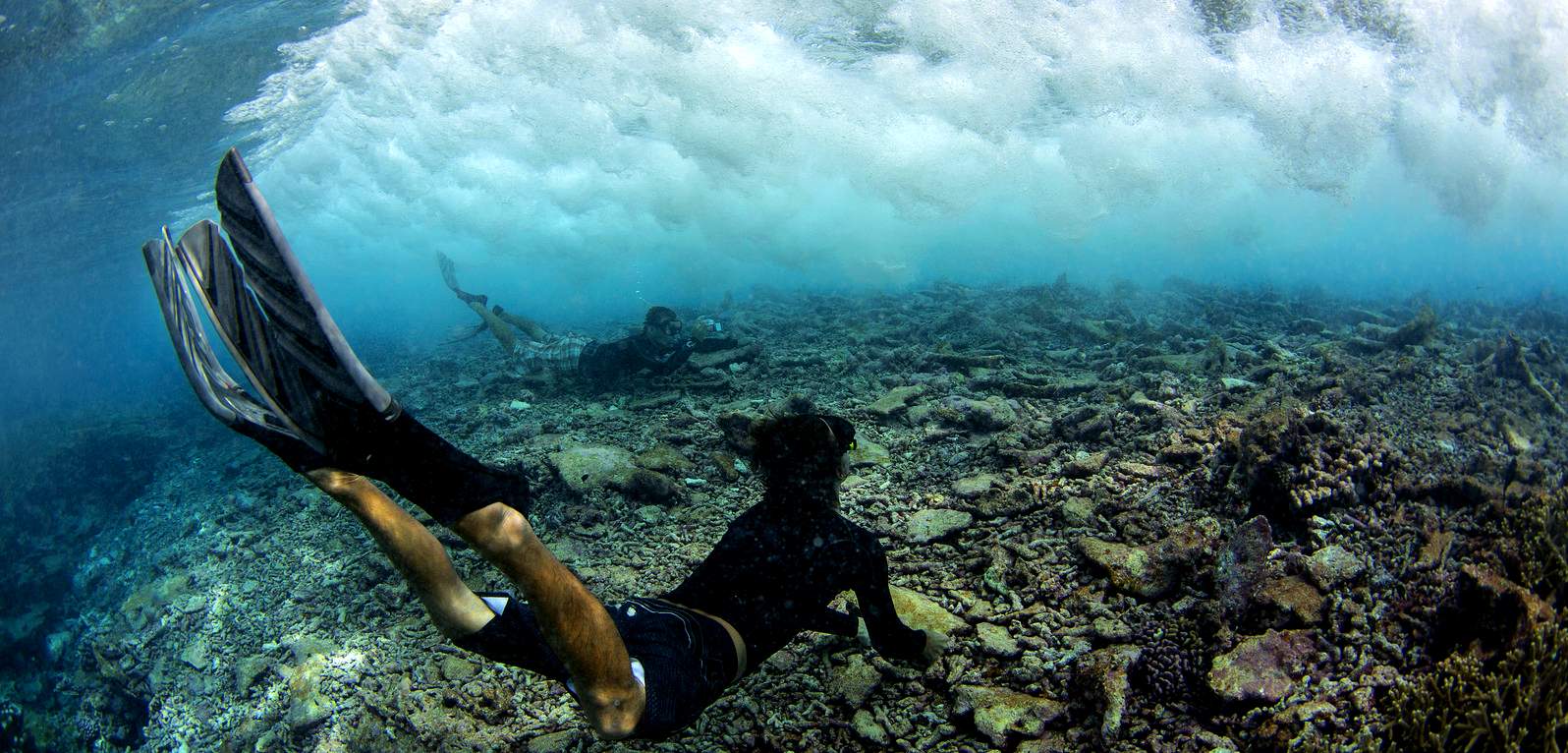
DEAD
CORAL REEFS - This
underwater cemetery
is proof of the harm Man is causing marine life where the
damage cannot normally be seen.
This
website is provided on a free basis as a public information
service. copyright © Cleaner
Oceans Foundation Ltd (COFL) (Company No: 4674774)
2018. Solar
Studios, BN271RF, United Kingdom.
COFL
is a charity without share capital.
|









